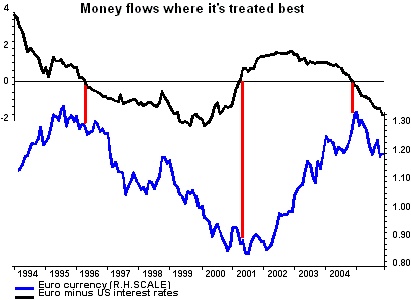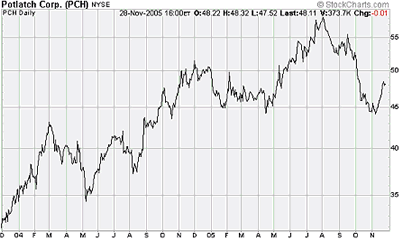| Home | About Us | Resources | Archive | Free Reports | Market Window |
How I Handled TrillionsBy
Wednesday, November 30, 2005
The Citigroup Centre, in London, runs the largest trading floor in Europe. It’s actually three floors... one for stocks, one for bonds and one for futures, options, and currency trading. That’s the floor I worked on... futures and options, level 3. The floors were subdivided into ‘trading desks’. Each desk seated anywhere from 3 to 10 traders, a handful of salespeople with direct lines to the customers, a systems guy, a trade-entry clerk and several accountants, all looking after their own particular little corner of the market. The desk I worked for was known as the ‘finance desk.’ It was our responsibility to manage Citigroup’s giant pool of traded assets... we had to provide liquidity to all the other desks on the floor, borrow and lend the firm’s inventory of financial instruments with other banks, and make sure the firm’s spare working capital was being put to good use. We had the largest balance sheet of any desk in the firm, measured in TRILLIONS. Of the 1,500 traders in the building, the guys on my desk easily managed the biggest positions, routinely measured in billions. At the end of each day, the traders would have to decide in which currency to invest their idle capital overnight. Different currencies paid different interest rates. By maximizing this rate, even if it was just a few basis points here and there, Citigroup made tens of millions of dollars in additional profits each year. This wasn’t speculation. This was a basic financial operation, like brushing your teeth before getting into bed. These guys weren’t looking for risk. They just needed a safe place to park the firm’s liquid assets for a few hours.
Most people don’t realize it, but it’s the routine trades just like this, not manic speculation, that usually move currencies. Here’s another way of putting it: Money flows to where it’s treated best. Academics call it interest rate parity theory. The currency expected to offer the highest return, all things being equal, will go up. Let me show you a profit opportunity we found based on this theory: The euro and the U.S. dollar are both major world currencies. In the short-term, both currencies are risk free and highly liquid. One pays 4% interest. The other pays 2%. If you had several hundred million dollars to look after for a few days, in which currency would you store them? The chart below shows the spread between Euro and U.S. interest rates. Notice how the spread between the two rates is driving the exchange rate.
Each of the three major turning points in the EUR/USD exchange rate – the blue graph - of the last 10 years occurred when U.S. interest rates were at the same level as Euro interest rates. Said another way:
This relationship has dominated exchange rate movements for over 10 years. Here at DailyWealth, we don’t expect it to change now. Therefore, until interest rates in Europe catch up AND overtake rates in the USA, we expect the dollar will continue its rise against the euro. As things currently stand, the Euro rate is at 2%. The European Central Bank meets tomorrow and will probably bump it up to 2.25%, although there is a rumor they may raise it to 2.50%. The U.S. rate is at 4% and is still rising...you’re getting paid more to hold dollars. Subscribers to True Wealth are already in on this deal... Steve recommended the ProFunds Rising U.S. Dollar Investor (RDPIX) six months ago. It’s an easy way to invest in a rising dollar with your retirement funds. So far, we’re up 6.5% on the trade. But because euro rates still have a long way to go before they match and exceed U.S. rates, we think the dollar still has a way to run before it makes a peak... This trade is still worth a punt. Every night, Citigroup puts trillions of dollars to bed. And every night, Citigroup chooses the currency that treats its money best. You should do the same. Good investing, Tom Dyson Market NotesMARKET NOTES Longtime True Wealth readers know that, over the next five years or so, we believe owning timberland will likely be much more profitable than your average stock. Our colleague Dan Ferris is also a big fan of owning timber…through a forest product company called Potlatch Corp. (PCH). As Dan lays it out: As shown by the two-year chart below, Potlatch’s recent correction gives new investors a nice chance to get on board.
We take note of Dan’s timberland recommendation for one reason: His investment ideas nearly always make his subscribers a lot of money. With a gain of 135% in Florida land development firm Consolidated Tomoka (CTO) and a 150% gain in land-rich Alexander & Baldwin (ALEX), Dan’s track record of delivering big returns with cheap land is incredible. |
Recent Articles
|



